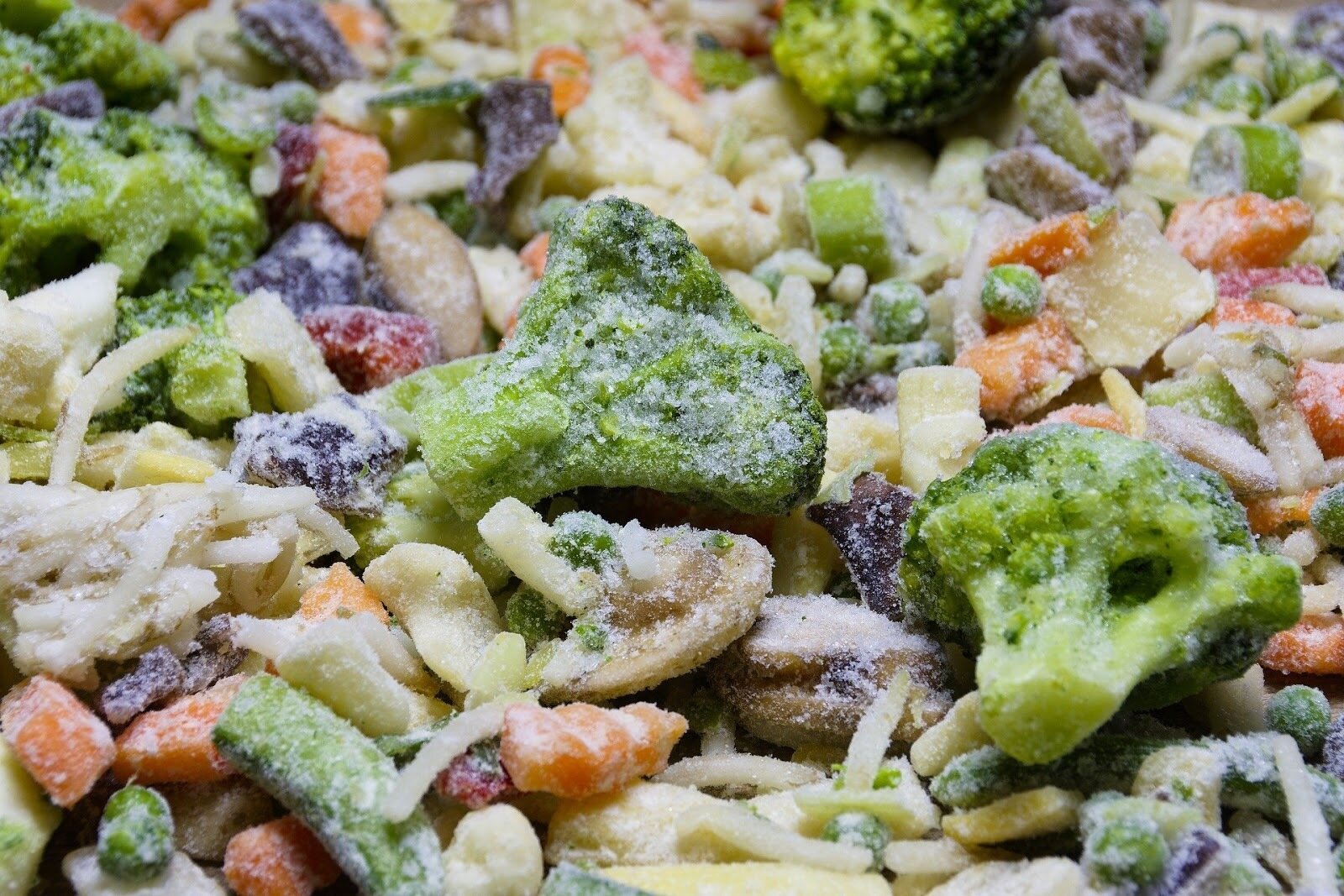The Ultimate Guide to Frozen Food Packaging

Nowadays, people prefer convenience, whether we’re talking about fruits, veggies, or semi-prepared meals. Frozen food can be a savior when living a busy lifestyle that prevents you from preparing healthy meals. Yes, you read that right, healthy meals.
Experts tend to agree that most food items retain all of their vitamins and minerals even after they’re frozen. What’s more, some nutritionists think that frozen foods are better for you than their off-season counterparts. But to retain nutritional value, food must be appropriately frozen.
If you’re thinking about freezing and selling food items, you need to learn how to do it properly. That’s what we’re going to discuss. Let’s start by talking...
What Are the Basic Elements of Frozen Food Packaging?
First, we need to discuss what frozen food packaging is. What materials do you use to package frozen food?
Now, there’s no single answer to that question. Some of the most popular options for packaging frozen food include wax-coated paper, metal cans, and cardboard, to name a few. The material needs to be flexible and durable.
Polyethylene shrink film is one of the most popular frozen food packaging materials. That’s because it can resist extremely low temperatures. Plus, it can be used to pack small food items and large ones.
Some of the features packaging materials need to have include:
- Easy to fill, seal, and store
- Blocking and resisting moisture
- Protecting from food spoilage
- Strong and durable at low temperatures
- Resistant to oil, grease, and water
Let’s talk more about the suitable materials for packaging frozen food items…
What Are Suitable Packaging Materials for Frozen Food?
When frozen, most foods expand up to 10%. This, of course, depends mainly on the moisture content of the food. Nonetheless, some expansion is expected, which is why the material needs to be durable to withstand it.
We’ve already mentioned some of the most common choices for frozen food packaging. Now we’ll see in more detail the pros and cons.
- Polyethylene Film: Withstanding low temperatures without compromising film quality. This packaging also delivers good strength during transportation and storage. PE films are also printable and can be additionally layered.
- Polyethylene Derivatives: There are various derivates of PE, such as LDPE and HDPE. These include shrinkwraps and flexible packaging. Plastic is great because it’s pretty durable and gives frozen foods insulation.
- Polyethylene Terephthalate: If your products need to withstand sudden temperature changes. PET is a good choice of packaging material. It can be used for “prepare-in-the-bag” frozen food products.
- Cardboard: Fresh fruit juices, vegetables, and curds are all regularly packaged in cardboard boxes. Even though cardboard has a limited life, it’s still pretty handy and cost-effective as a packaging material.
- Tin Cans: For decades at this point, tin cans have been the go-to packaging material for frozen foods. Of course, tin cans aren’t all that economical. If you have a modest operation, you should think twice before investing in tin cans.
What Are Some Frozen Food Packaging Design Considerations?
Picking the suitable material is essential. But your work is far from over. Now you need to ensure your package does its job. It needs to keep the food frozen. Keep the shape of the package. And finally, attract the attention of shoppers.
To ensure the package does its job correctly, here are a couple of design considerations to keep in mind…
1. Convenience is Key
When working on packaging design, instead of having an ordinary surface, try having patterns. They’ll create friction between your product and hands. That will help people carrying the product to avoid slipping. If you’re using cardboard, a smart thing to do is to laminate the packaging interior. That will keep the package moisture-resistant inside and prevent the cardboard from absorbing water.
2. Sustaining Transit
Your packaging will go through a lot while during transport. It will experience everything from sudden temperature changes to vibrations and jerks. That’s in an ideal situation. We’re not even mentioning the possible mishandling. A few “hacks” that can help your product sustain the transport from the factory to the retailer are:
- Filling the package just right to keep the items inside intact
- Sealing your packaging correctly to avoid possible spillage
- Avoid having sharp edges in your design to prevent worker injury
Also, make sure that your package has the proper insulation. By doing this, you’ll ensure that the package can withstand pressure and temperature changes while transported.
3. Visual Appeal
Last but not least, the package needs to be visually appealing. The frozen food needs to be easily recognizable through the refrigerator door. That’s why you should consider having see-through packaging. Of course, that doesn’t mean that you should avoid having any graphics on your packaging, far from it. A good combination of colors and graphics will increase your chances of selling your product significantly.
How to Find the Right Frozen Food Packaging?
Now that you understand how frozen food packaging works, you can start work—finding the suitable packaging materials, figuring out marketing, and looking for the right end of line packaging partner to pick your frozen product and load into the appropriate wrapper or shipping container.
Here at BluePrint Automation, our main intention is to create a tailored case packing solution for your business. No matter what your frozen food packaging needs are, we’re able to create an end of line solution that will address all of your needs.
Remember, your packaging solution is just a call away. When you are ready to load your frozen product, don’t hesitate to contact us right away and start work on your end of line packaging today.



